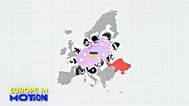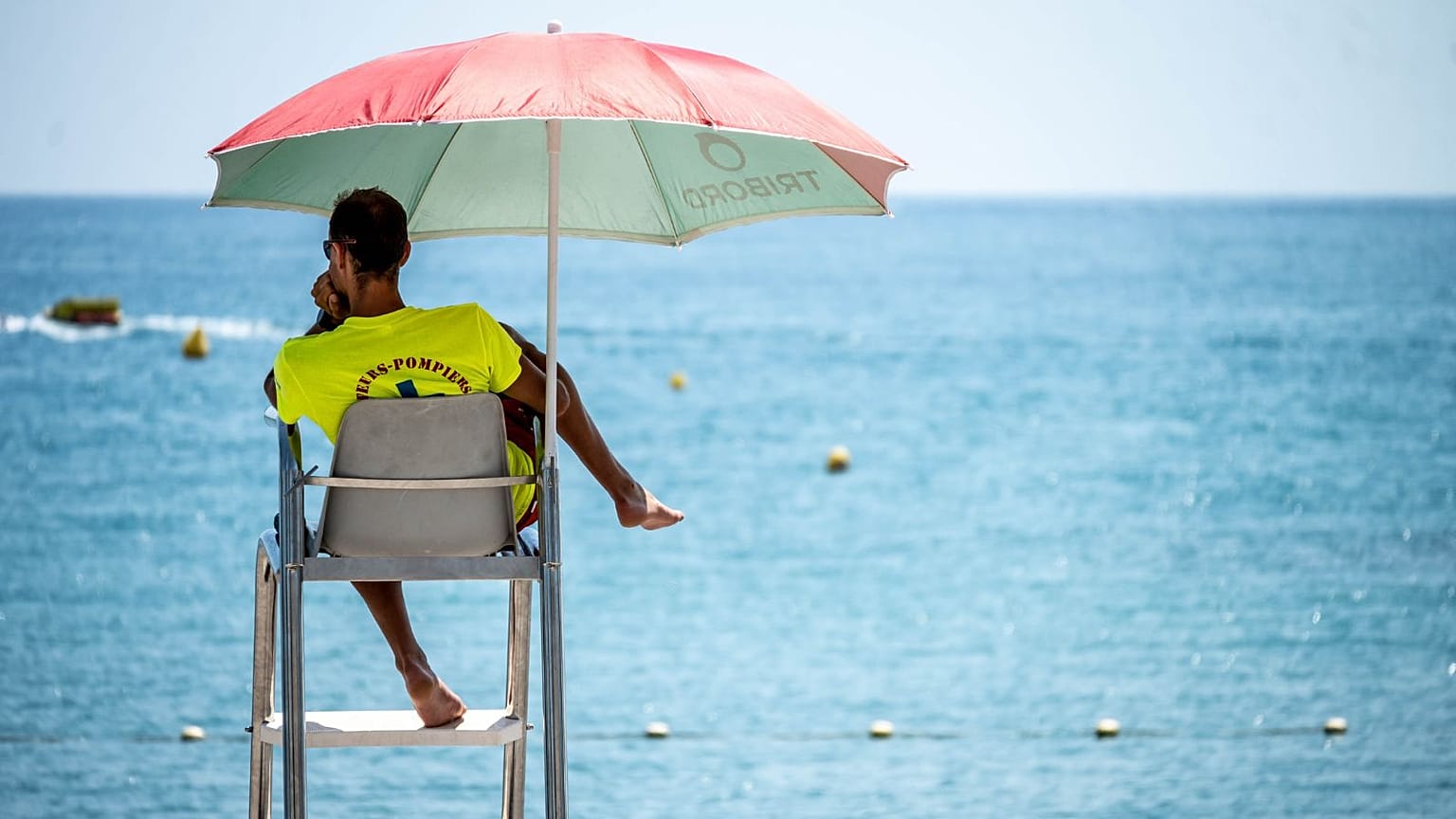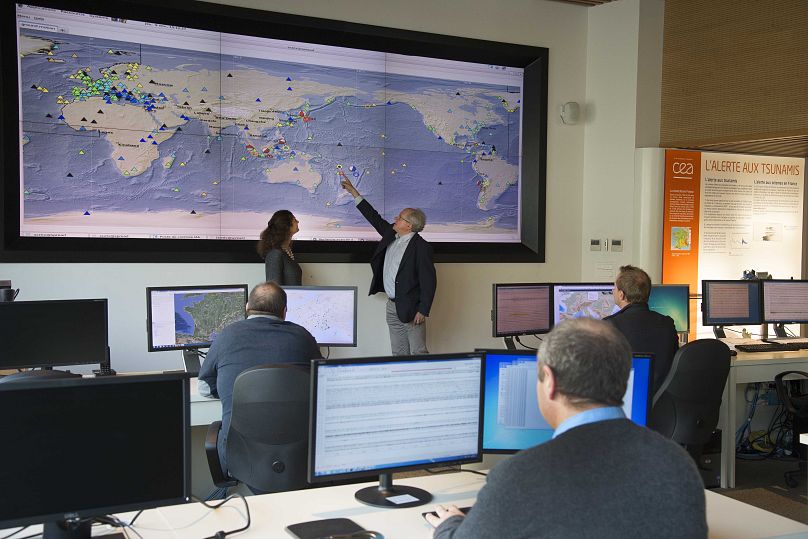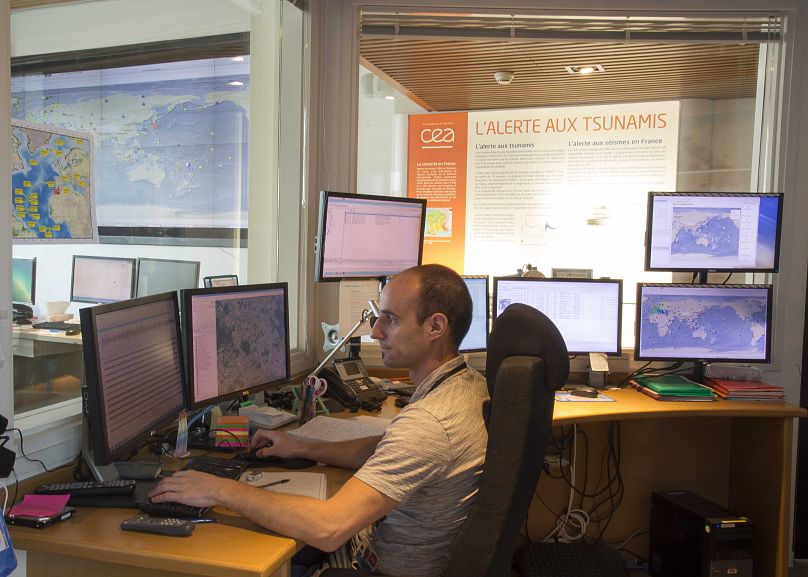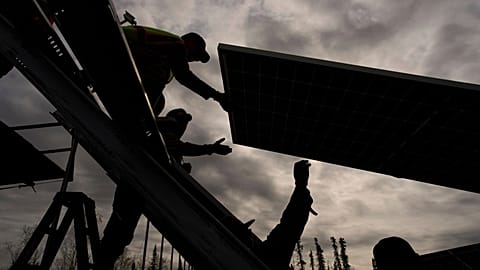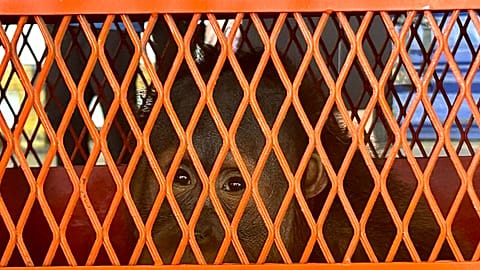With a tsunami alert drill taking place today in the south of France, we explore why it's necessary.
Tucked away on the outskirts of Paris, France’s tsunami alert centre could hardly feel further removed from the ocean.
Yet the CENALT is the very epicentre of the country’s tsunami warning network - and the place that could one day save thousands of lives.
While it is highly unusual to see anything on the scale of the Indian Ocean tsunami of 2004, which killed around 250,000 people, tsunamis are more common than many people realise - including here in Europe.
In the Mediterranean, and the seas connected to it, there have been around a hundred tsunamis since the beginning of the 20th century. That’s around 10 per cent of all those recorded in the same period.
Although less common, tsunamis in the north-east Atlantic still account for around five per cent of the full total. Among these was one particularly catastrophic event.
The Lisbon earthquake of 1755
“The most powerful tsunami that we know about in the Atlantic was the one triggered by the Lisbon earthquake of 1755,” says Hélène Hébert, national coordinator of the CENALT - which stands for CENtre d’ALerte Tsunami.
That earthquake had a magnitude close to 8.5, she explains, which is similar to what we see in the Pacific Ocean several times a century, but in the Atlantic it’s very rare.
“Although the French coasts were largely protected by the Iberian Peninsula, the tsunami destroyed most of Lisbon and Cadiz and parts of Morocco, with several thousands of victims.”
The resulting waves reached as far as south-west Cornwall and Ireland.
“This is the kind of major tsunami that we can expect to happen every three to five centuries. So, it could happen tomorrow - or it could happen in the next century - but we know that it will happen.”
A tsunami warning within 15 minutes
While the majority of tsunamis tend to be much smaller than that, they can still leave devastation in their wake - and result in loss of life - which is why the work of the CENALT is so important.
The centre celebrated its 10th anniversary in 2022. It was set up in the aftermath of the 2004 tsunami as part of a wider initiative by UNESCO to establish tsunami warning systems throughout the world.
Located in a state-of-the-art building that operates 24 hours a day, seven days a week, it is manned by a team of specialists in geophysical data analysis from the CEA (the French Alternative Energies and Atomic Energy Commission).
In short, there are two main aims: first, to detect any earthquake that could cause a tsunami and alert the relevant authorities within 15 minutes. Secondly, to let them know whether there is a tsunami - and, if so, the arrival times and amplitudes.
The initial information is gathered from a network of several-hundred seismic stations, which are each displayed on a huge screen in the main gallery, and which transmit data whenever a tremor is detected.
The event is then given one of three threat levels according to the seriousness - yellow, orange or red - and the corresponding warning sent out. The appropriate tide gauges are also monitored to ascertain the sea levels.
How does tsunami-detecting technology work?
“When one of the seismic stations flashes red, it means that it detects a signal,” explains Pascal Roudil, technical coordinator at the CENALT.
The station could just be picking up a strong wind or the passage of a truck. But if several stations start flashing simultaneously, it means that they are affected by a fairly strong seismic wave. In other words, an earthquake.
The system then tries to find the epicentre of these detections and adds the information on the map, in the form of a circle, the size of which represents the magnitude and the colour indicates the depth.
“Our aim is to alert the relevant authorities within 15 minutes because the tsunamis can arrive quite quickly,” he adds. “In the western Mediterranean, for instance, if we have an earthquake near Algeria, it will cross the sea within an hour and 15 minutes. So, it doesn’t leave much time.
“Also, while our tsunamis are not as big as in the Pacific, you don’t need waves that are 30 metres high to have damage and injuries. Even 50cm can be dangerous to swimmers.”
What is the risk of a tsunami in France?
Thankfully, as yet at least, there have been no major incidents at the CENALT.
Between its inception and 2022, the centre had issued 84 'information level' alerts (no risk of a tsunami) and only two 'warning level' alerts (waves of less than one metre on the coast) - the last of which, in March 2021, caused sea levels in Toulon to rise by about five cm.
But we also know that it’s only a matter of time.
“The French Riviera is probably one of the most hazardous areas in mainland France, with the greatest threat coming from the North African coast,” says Hébert.
Cities and towns on the Côte d'Azur, which is highly popular with tourists, have also been working to prepare people. Cannes has set up a digital transformation point, while Antibes is staging evacuation exercises.
“We don’t expect waves of 20m, like in Japan, Chile or Sumatra, but more like one to two metres," adds Hébert.
However, what is extremely hazardous is not only the altitude of the tsunamis but the flows and fluxes of the water - and the flooding coming into the shore - which can cause damage to beaches, harbours and streets.”
Looking to the future, while the analysts can be justifiably proud of their work at the CENALT over the last decade, they are far from standing still.
Though the technology has progressed dramatically, they are keen to continue their own research - not least because the rising water levels caused by the climate crisis could exacerbate things further.
The effect of the climate crisis
“Although the water level does not affect the tsunami in itself - because an earthquake can occur whatever the sea level - it can certainly impact the effect on the coastline,” says Hébert.
“For example, if it’s a small harbour and the waterfront is very low, such as in Cannes or Toulon, a tsunami could be more treacherous.
“So, in the coming years, it would be great to produce real-time forecasts - like we have now with the weather - using numerical simulation. For example, to forecast that in Nice we can expect 3.5m, or Marseille around 0.5m etc, for a specific event.”
Just one more reason, then, why the CENALT will no doubt remain at the forefront of tsunami warning technology. And not just for the next 10 years but for many more to come.




